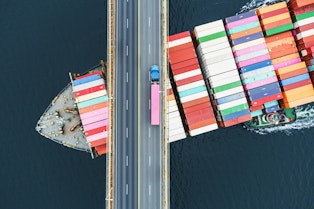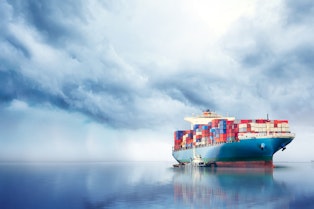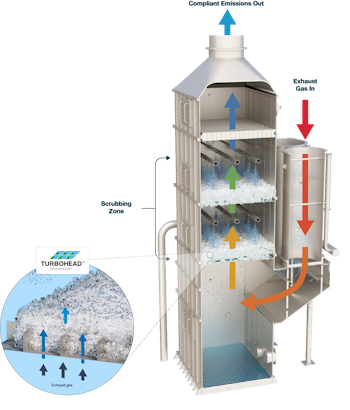
The March 4 headline on the American Shipper website was as worrying as any news of shipwreck or piracy on the high seas. “Ship fuel spikes to historic $1,000/ton mark as war fallout worsens,” screamed the heading.
Vessel fuel had already become pricy before Russia’s invasion of Ukraine in February, said the story. Since the start of the conflict, fuel costs had “gone parabolic,” Braemar ACM Shipbroking was quoted as saying.
Nor was this a temporary spike. In June, prices were once again in uncharted territory after the average cost of very low sulphur fuel oil (VLSFO) at the world’s top 20 bunker fuelling ports surpassed its March record of $1,040.50 per ton and hit $1,042.
As of the end of July 2022, the global 20 ports average for VLSFO was still eye-wateringly high, at more than $900 per ton, while the Americas average still had not dropped below $1,000. For context, the average price of VLSFO was $544 per ton in 2021.
That level was up 46% on a 2020 average of $374. Put another way, the price of shipping fuel has risen more than two and a half times in the last couple of years. And there is little sign of the high prices letting up any time soon.
...the price of shipping fuel has risen more than two and a half times in the last couple of years. And there is little sign of the high prices letting up any time soon.
“Since the lows of 2020, oil prices have been on the rise following the post COVID-19 demand recovery, while supply has been lagging resulting in tightness,” warned market intelligence provider Engine in June.
“This tightness was further aggravated by the war in Ukraine followed by the uncertainty around Russian exports and whether other countries could potentially bridge the supply gap,” said the company.
Some western leaders have said the war in Ukraine could last for years. Russia is a major supplier of marine fuels and “has faced far-reaching sanctions,” according to S&P Global Commodity Insights.
Restrictions on Russian supplies have led other oil-producing nations to press forward with new refinery capacity.
Kuwait, for example, is rushing to complete a new refinery at Al-Zour that can handle 615,000 barrels a day and will fundamentally change the picture for vessel fuel supplies, according to a trader cited by S&P Global.
However, the facility will not fully ramp up until the first quarter of 2023. So, what should vessel owners do in the meantime?

Container shipping companies can pass fuel costs on to their customers through bunker adjustment factors (BAFs) that are usually updated every quarter. They can also apply emergency bunker surcharges if needed.
BAFs have risen steadily since 2020 and the increases are more than compensated for in base freight rate price rises. However, shipping companies must put up with high fuel costs in between BAF increases.
And freight rates cannot rise forever—sooner or later, it will make more financial sense for container customers to seek alternative means of transportation or nearshore production.
This means vessel owners—and particularly those that cannot rely on BAFs or emergency surcharges to offset rising costs—should look for other means to deal with exorbitant shipping fuel prices. The easiest way to do this is to stop using VLSFO.
The fuel has become the standard for international shipping because its low sulphur content is in line with global regulations set out by the International Maritime Organization. But making VLSFO is expensive.
Cheaper vessel fuels are available, but they can only be used by vessels that have invested in scrubbing equipment to remove sulphur from exhaust fumes. Such investments look like an increasingly good idea in the current environment.
At the end of July 2022, for example, the global 20 ports average price for high sulphur fuel oil (HSFO, also called IFO380) was $585 per ton, or around 36% cheaper than VLSFO.
In March, American Shipper reported that Capesize dry cargo ships with scrubbers were saving more than $9,000 a day in fuel costs compared to vessels that had to run on VLSFO.
This allowed them to earn more than $19,600 a day, nearly twice as much as vessels without scrubbers.
“In terms of who will benefit versus who will be harmed in a rising bunker fuel cost environment, we believe owners with scrubber-equipped vessels in sectors with rising rates will benefit the most,” Jefferies analyst Randy Giveans was reported as saying.
“Rising spot rates will help offset the rising cost of bunker fuel, while the widening fuel spread will benefit owners with scrubber-equipped vessels via substantial fuel-cost savings.”

In June, Vespucci Maritime CEO Lars Jensen noted how scrubber-equipped vessels could see an additional benefit. “Most bunker fuel surcharges are linked to VLSFO price,” he explained.
“This, de facto, means if a carrier has scrubbers on the vessels and BAFs linked to VLSFO, it is effectively getting paid by shippers for the high cost of VLSFO while at the same time buying the IFO380 [for] less and pocketing the difference.”
What about vessels that cannot apply BAFs, such as tankers and bulker fleets? Here, said American Shipper in June, “the owner pays for fuel in a spot voyage deal. Thus, the higher the fuel price, the lower the spot rate net of fuel.
“The current dynamic creates a huge advantage for owners that either have ships with scrubbers allowing them to burn HSFO or have fuel-efficient ‘eco’ designs allowing them to burn less VLSFO or HSFO.”
An old very large crude carrier without eco design or scrubbers could end up losing $7,400 a day on the spot market, American Shipper noted. In practice, though, it would not make sense to sail under such conditions.
Instead, the smart thing would be to install a scrubber as quickly as possible.
The process is straightforward when involving a compact, advanced scrubber design such as Pacific Green’s ENVI-Marine product, which can be supplied as an open loop, open loop hybrid-ready or hybrid system.
ENVI-Marine scrubbers have already been fitted to more than 130 vessels around the world, allowing fleet owners to achieve a massive return on investment in today’s high-fuel-price environment. To find out how they could benefit your fleet, contact us now.
Publish date: 01 August, 2022